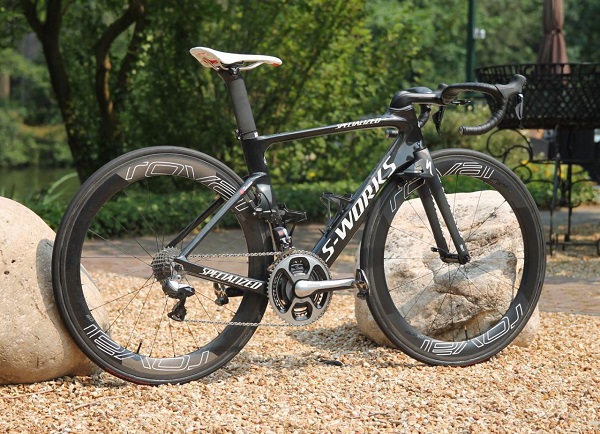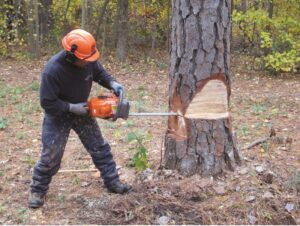How to stand bike without a stand?
Crucial to any rider’s essentials is having a durable, reliable and dependable bike. No wonder then that bike enthusiasts would want to invest in one that can stand the test of time. Nowadays, a high-end bike with an elaborate build quality would not only be expensive, but it is also not very practical. This invention comes in as a cheap and easy alternative to maintain your bike. While it comes as handy for securing your precious ride from falling, it is also an investment in the well-being of the rider.
How to stand a bike without a stand?

The stand offered by this invention is a combination of hardened steel and 3D printing technology. When you go to buy your bike, make sure that it comes with its own lock. The same goes for turning up late for work because you got delayed at the last minute. If possible, try securing some real locks on both ends as well. Keep reading: Stationary bicycle stand
Step 1: Measure and sketch out the outside dimensions of your bike. Make sure that it is as accurate as possible for easy assembly later. For this demonstration, we used a sleek-looking mountain bike. Note: When measuring and drawing down the bike’s measurements, make sure to have enough room between yourself and other riders while seated on it. 3M sells suitable sticky pads in rolls. Each roll is priced at tax accordingly depending on what state you live in (the United States, for example). Keep reading https://gothicfuturism.com/mtb-lubrication-mistakes-to-avoid
Step 2: After you have completed the measurements, cut several pieces of 3M foam magnet strips. For a mountain bike with 29″ wheels and 20 cm handlebars, we used 6 strips.
Step 3: Cutout slots on both ends of each magnetic strip to fit any standard 1mm or thicker steel rod material such as masonry anchors. Loft them out by rolling them back and forth along the active side part. The material should lie flat when the magnet strip is flipped and held closed.
Step 4: Insert 3D printed or a standard steel cable through each slot in your design with an opening on one end to secure it all at once before inserting into brackets created by another layer of cut slots which are placed horizontally across each other in a triangle formation around the bike’s frame tubes. In case you made permanent holes for securing the bike by a steel cable, be sure to insert glue along the inside edge of these holes. Until then, however, you can choose to cut out more foam strips for re-enabling this application later if needed in case the need arises again.
Step 5: Look at it from above and double-check that your design will snap together nicely with no obstructions on either side before mounting it onto your bike’s frame or another surface nearby.
Step 6: Measure the thickness of your handlebars and make sure that they do not interfere with the feasibility of cutting through 3m magnet strips. However, be careful while bending them to make it close because if you bend too much this step, certain areas may start to tear out, especially in case all bars are bent towards points halfway between top and bottom on each side so as a result, sticky pads will need putting back in place. Make sure there is no space from your magnets and handlebar screws so that everything will come out straight.
Step 7: Mount the magnetic strips into place on each side of the 3D printed bracket by inserting steel rods through slots that lay sideways in a triangle formation around the tube, being careful to keep the area around the magnet’s edges flat. Make sure all areas created from foam pieces are free at either end before mounting as well or else it is prohibited for you to cut away more foam pieces.
Step 8: Cut long pieces from foam materials and glue them together in two rows on each side of the bike frame where you want to nail or screw your bracket; however, do keep this place as separate for a caveat that when being cut by saws, there may be tendons dragged along which can cause trouble so think well before making cuts based upon instructions above.
Step 9: Using wood screws with both rods inserted through holes at one side of the brackets and lastly screwing it all together by inserting nails into each hole on another side, start assembling your handlebars in place as well.
Step 10: Lastly, push down remaining sticky pads until they raise up to the correct position after given some time, yet doing this close is advisable before mounting again because if you make small missteps at first with both rods, then the chances are that one area may get torn out temporarily so make sure everything works well before mounting again.
Step 11: Put together your handlebars with screws and lastly, take off the 3D printed mount if you want to remove it altogether or if it’s still on there, in which instance case does keep all resources that were used for this tutorial intact upon removing such as those sticky pads without them being reused ungratefully.
Tips for standing bike without a stand
For people who want to acknowledge that they can, in fact, ride riding a clearly standing bike, you need no doubt it’s not as simple and trivial. However, the best skills are shown here for standing a bike allows one to be stable, no matter if it’s downhill or uphill.
- For a successful standing bike, you will require at least one ken for support whilst on it. The idea here is always to land your intended foot as close to the ground as possible with also considering the possibility of regretting injuries or frustration in terms of perils involved if not done within moderation and consideration.
- Having the right balance is always a factor; still, several factors can avail help you achieve this and in reverse learning on how to ride safely.
- A bike swab can provide you with security and stabilize your riding faster than standing on the sole of another individual or anything else. Nonetheless, having a good foot grip is regarded as vital, which will maximize the amount of support via this means and also ensures dominance over effort was made to accomplish such by all those who’ve gone previously.
Conclusion
The most important thing you can do to improve your bike’s performance is to make sure it’s properly maintained. If you’re new to cycling or haven’t had a chance to learn the basics, this post will help you with basic maintenance and safety tips. This may be all you need to get started on your next ride!




